Prepare to be enchanted as we delve into the mesmerizing tale behind the Pegasus Constellation. Look up at the night sky and let your imagination take flight as we explore the mythical origins of this celestial wonder. From the divine lineage of its birth to the heroic quests it embarked upon, the story of Pegasus is one of triumph, tragedy, and the enduring power of the human spirit. Join us on a captivating journey through ancient mythology, where gods, monsters, and heroes collide in a cosmic dance that has echoed through the ages. So sit back, relax, and prepare to be swept away by the mythological marvel of the Pegasus Constellation.
Contents
- The Birth of Pegasus
- Pegasus and Bellerophon
- Pegasus and the Muses
- From Myth to Constellation
- Conclusion
-
Frequently Asked Questions
- 1. What is the significance of Pegasus in Greek mythology?
- 2. Was Pegasus the only winged horse in mythology?
- 3. Were there any other creatures born from Medusa’s severed head?
- 4. Did Pegasus have any special abilities?
- 5. Was Pegasus involved in any heroic quests besides aiding Bellerophon?
- 6. Is there any connection between Pegasus and the muses?
- 7. How did Pegasus become a constellation?
- 8. Can the Pegasus constellation be seen with the naked eye?
- 9. Are there any other connections between Pegasus and astronomy?
- 10. Is there any modern-day symbolism associated with Pegasus?
- References
-
Frequently Asked Questions
- What is the meaning behind the Pegasus constellation?
- Who were Pegasus’ parents in Greek mythology?
- What happened to Medusa after she was killed?
- Who was Bellerophon and how did he tame Pegasus?
- What was Bellerophon’s quest with Pegasus?
- How did Bellerophon’s pride lead to his downfall?
- What was the connection between Pegasus and the Muses?
- What was the request made by the Muses to Pegasus?
- How does the Pegasus constellation appear in the night sky?
- What is the significance of the Pegasus constellation today?
- References
- Read More
The Birth of Pegasus
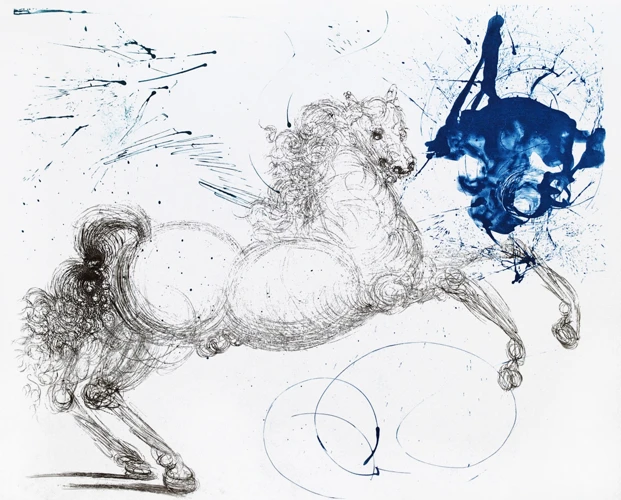
Legend has it that the birth of Pegasus was no ordinary occurrence but a divine event with extraordinary implications. Medusa, a beautiful mortal woman with hair of serpents, caught the attention of the sea god, Poseidon. As they succumbed to their desires, Medusa’s beauty was transformed by Athena’s wrath into a hideous creature whose gaze could turn any mortal to stone. It was during this time, while Medusa’s headless body lay on the ground, that a miraculous event took place. From her severed neck sprang forth Pegasus, the winged horse, with a dazzling white coat and magnificent wings that shimmered like stars in the night sky. Thus, Pegasus came into existence, born of a monstrous creature and divinely blessed by his celestial lineage.
A Divine Lineage
Pegasus, the majestic winged horse, possessed a divine lineage that traced back to his parents, Medusa and Poseidon. Through his mother, Pegasus inherited his otherworldly beauty and the ability to transform the world around him. The sea god, Poseidon, gifted Pegasus with his enormous wings, allowing him to soar through the sky with grace and freedom. These celestial appendages, said to be crafted by Hephaestus himself, granted Pegasus the power to traverse between the heavens and the earth. This divine lineage bestowed upon Pegasus an ethereal quality that set him apart from any other creature in existence. It was this unique heritage that made Pegasus a beloved figure in myth and legend, symbolizing the connection between mortal and divine realms, a bridge between the ordinary and the extraordinary. Truly, Pegasus embodied the wonders of both heaven and earth. Discover more about the fascinating world of ancient mythology and the enduring tales that have captivated humanity for centuries.
Medusa’s Curse
Medusa’s curse was a dreadful fate that transformed her from a mesmerizing beauty to a horrifying monster. It was Athena, the goddess of wisdom and war, who cursed Medusa for desecrating her temple. With a single glance from Medusa’s eyes, unsuspecting victims would be turned to stone, frozen in their tracks forever. This curse not only isolated Medusa from society but also made her a pariah amongst her kind. A once alluring creature, Medusa became feared and shunned by all who crossed her path. However, from this curse emerged the miraculous birth of Pegasus, a symbol of both beauty and freedom. Though Medusa’s curse was a tragic and final chapter in her story, it paved the way for Pegasus to soar through the skies as a beacon of hope and wonder. Explore the captivating enigma of Pegasus and witness the extraordinary journey that unfolded from Medusa’s curse.
Pegasus and Bellerophon
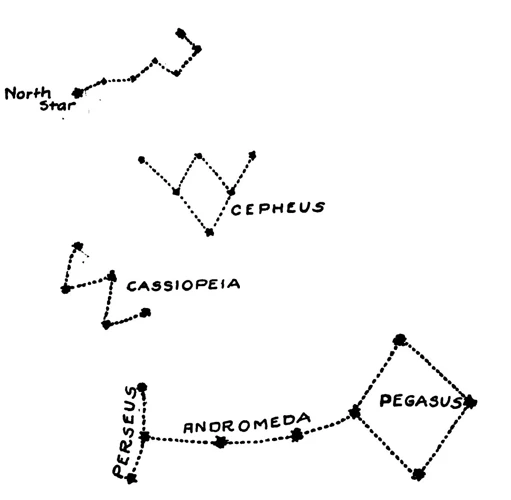
The tale of is one of bravery, ambition, and the perils of unchecked pride. Bellerophon, a mortal hero known for his extraordinary skill and courage, sought to tame the magnificent Pegasus. His quest was inspired by a divine intervention, as the goddess Athena appeared in his dreams and instructed him to capture the winged horse. Mounting Pegasus with the aid of a golden bridle provided by Athena, Bellerophon became an unparalleled symbol of power and nobility.
Together, they embarked on a series of heroic adventures, slaying monsters and conquering formidable foes. Bellerophon’s triumphs included the defeat of the dreaded Chimera, a fire-breathing creature with the body of a lion, the head of a goat, and a serpent’s tail. Such acts of valor elevated Bellerophon to legendary status, earning him the respect and admiration of his peers.
However, the hero’s hubris began to overshadow his accomplishments. Blinded by his own pride and arrogance, Bellerophon defied the gods by attempting to ascend to Mount Olympus on the back of Pegasus. This act of audacity incurred the wrath of Zeus, the ruler of the gods. In response, Zeus sent a gadfly to sting Pegasus, causing him to buck and throw Bellerophon from his back.
Falling from the sky, Bellerophon was left crippled and broken, a stark reminder of the consequences of hubris and the perilous nature of challenging the gods. Pegasus, on the other hand, was allowed to fly freely among the heavens, forever immortalized as a symbol of majesty and untamed beauty.
Through the tale of Pegasus and Bellerophon, we learn of the dangers of unchecked ambition and the importance of humility in the face of greatness. Their story serves as a cautionary reminder that even the mightiest of heroes can fall, and that it is through a balance of power and humility that true greatness is achieved. So let the legend of Pegasus and Bellerophon remind us of the perils that await those who dare to challenge the gods, and the ultimate price one may pay for overstepping their mortal bounds.
A Hero’s Quest
In the realm of ancient mythology, the heroic figure of Bellerophon emerges as a central character in the tale of Pegasus. Having tamed the magnificent winged horse with the help of the goddess Athena, Bellerophon embarked on a daring quest to defeat the fearsome Chimera, a fire-breathing creature with the body of a lion, the head of a goat, and a serpent’s tail. Riding atop Pegasus, Bellerophon soared through the sky, armed with his trusty spear and shield. Together, they battled the monstrous Chimera, their courage and unwavering determination prevailing against all odds. It was a testament to the symbiotic bond between man and horse, showcasing the remarkable connection forged between Pegasus and his heroic rider. This legendary quest not only solidified Pegasus’ reputation as a creature of great power and valor but also immortalized Bellerophon in the annals of mythology. Their extraordinary partnership continues to inspire generations, reminding us of the heights we can achieve when united in purpose and bravery.
Bellerophon’s Hubris
Bellerophon, a brave and skilled warrior, soon found himself entwined in the story of Pegasus. Eager to prove his worth, Bellerophon sought the guidance of the wise centaur, Chiron, who advised him on how to tame the majestic winged horse. Together, they formed an unbreakable bond and prepared for the challenges that lay ahead. However, Bellerophon’s hubris began to cloud his judgment. Believing himself to be invincible, he had grand ambitions and sought to ride Pegasus to Mount Olympus to join the gods. Ignoring the warnings and advice of Chiron, Bellerophon climbed onto Pegasus’ back and soared towards the heavens, his pride leading the way. The gods, angered by Bellerophon’s arrogance and audacity, sent a swarm of stinging insects to attack Pegasus. Startled and wounded, the winged horse bucked Bellerophon off its back, leaving him to fall back to Earth while Pegasus continued its flight alone. This downfall serves as a cautionary tale, reminding us of the perils of unchecked pride and the consequences that can follow when mortal ambitions challenge the divine.
Pegasus and the Muses
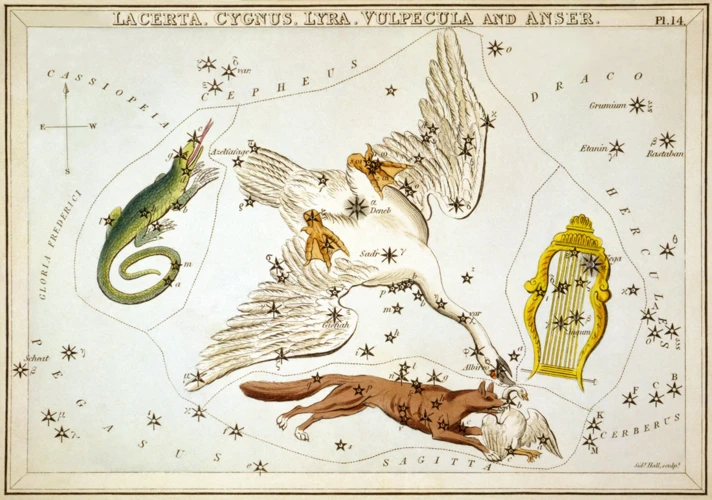
Pegasus, the majestic winged horse, not only graced the realms of gods and heroes but also played a significant role in inspiring and elevating the world of art and creativity. The Muses, the nine goddesses of inspiration, were deeply enamored by Pegasus and recognized his immense potential in shaping the artistic endeavors of mortals. One day, as the Muses reveled in their harmonious melodies, they made a heartfelt plea to Pegasus. They beseeched him to share his ethereal essence and gift them with his divine presence. Pegasus, moved by their sincere request, consented and allowed the Muses to mount him, carrying them to newfound heights of imaginative expression. With each beat of his magnificent wings, Pegasus transported the Muses to the farthest corners of their creative capacities, igniting a wildfire of inspiration that burned bright within the hearts of artists, poets, and musicians. This symbiotic relationship between Pegasus and the Muses resulted in the birth and propagation of extraordinary works of art, forever uniting the realms of mythology and creativity in a harmonious dance of eternal beauty and expression.
The Muse’s Request
The story of Pegasus takes an intriguing turn when the Muses, the goddesses of inspiration and creativity, made a special request. They approached Pegasus with a plea to help them in their celestial endeavors. The Muses desired a way to access the heavens, to be able to soar among the stars and be closer to the divine source of their inspiration. Recognizing the significance of this task, Pegasus gracefully agreed to their request, for he understood the profound connection between art and the celestial realm. With his wings outstretched, Pegasus carried the Muses on his back, elevating them to new heights where their creativity could transcend earthly boundaries. Together, Pegasus and the Muses embarked on a dynamic partnership, merging the realms of art and the cosmos in a harmonious dance that continues to inspire creative souls to this day. It is this partnership that immortalizes Pegasus, forever uniting him with the celestial beings who recognized his extraordinary abilities.
Pegasus’ Soaring Flight
Once Pegasus had emerged into the world, he quickly discovered his innate ability to soar through the skies with grace and majesty. With his magnificent wings spread wide, he took flight, effortlessly gliding through the heavens. Pegasus became known as the embodiment of freedom and the symbol of inspiration. It is said that he would visit the Muses, the goddesses of artistic inspiration, and carry their divine melodies to the ears of mortals, sparking their creativity and igniting their imaginations. Pegasus’ soaring flight was not simply a physical act, but a spiritual experience that transcended the earthly realm. His wings would carry him to unimaginable heights, where he could witness the dance of the stars and commune with the celestial beings. The enchanting sight of Pegasus’ flight inspired countless stories, songs, and works of art that celebrated the notion of boundless imagination and the limitless possibilities that lie within our grasp. To this day, Pegasus’ airborne escapades continue to inspire dreamers and visionaries to reach for the stars, reminding us that our own creativity has the power to transport us to extraordinary heights.
From Myth to Constellation
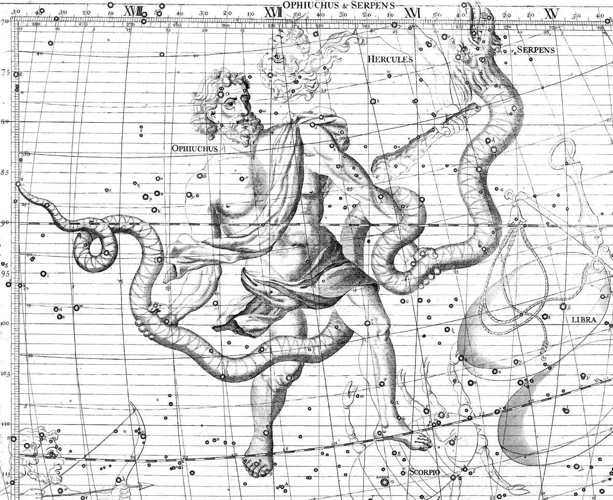
The transformation of Pegasus from a mythical creature to a constellation in the night sky is a testament to the enduring impact of ancient legends. In Greek mythology, after performing various heroic feats, Pegasus found himself soaring through the heavens. Zeus, the king of the gods, was so impressed by Pegasus’ bravery and beauty that he immortalized him by placing him among the stars. And so, the majestic winged horse became a constellation, forever immortalized as a celestial symbol of courage and inspiration. Now, when we gaze up at the night sky and spot the distinctive pattern of stars known as the Pegasus Constellation, we are reminded of the mythical adventures of this legendary creature. It serves as a reminder that the echoes of ancient tales continue to capture our imaginations, even in the vast expanse of the cosmos. So, find a quiet place beneath the starry night and let the myth of Pegasus transport you to a realm where heroes and gods reside, forever etched in the fabric of the universe.
Accommodation in the Stars
In the realm of constellations, Pegasus finds its rightful place among the stars. Positioned in the northern sky, its unique shape captivates stargazers and storytellers alike. The Pegasus Constellation is comprised of four prominent stars that form a giant square, aptly known as the “Great Square of Pegasus.” These stars, named Alpheratz, Scheat, Markab, and Algenib, represent the body and wings of the majestic winged horse. Alpheratz, the brightest star in the constellation, serves a dual role, as it also forms part of the neighboring constellation Andromeda. The celestial accommodations of Pegasus are not limited to the Great Square, as numerous other stars embellish its heavenly form. Together, they create a celestial masterpiece reminiscent of the mythical creature’s graceful and powerful presence. As we gaze upon the intricate tapestry of stars that make up Pegasus, we are reminded that even in the vastness of the cosmos, stories and legends find their place, providing us with both wonder and a connection to the mysteries of the universe.
Illuminating the Night Sky
As Pegasus soared through the sky, his radiant presence left a lasting mark on the celestial canvas, giving birth to the Pegasus Constellation. Positioned prominently in the northern sky, this constellation captivates stargazers with its iconic shape resembling a winged horse in mid-flight. Upon closer observation, one can spot the four main stars that form the body of Pegasus, commonly known as the Great Square of Pegasus. This unmistakable formation serves as a navigational guide for astronomers and amateur stargazers alike. Beyond its aesthetic appeal, the Pegasus Constellation has also become a subject of scientific inquiry. Astronomers have discovered that within this celestial masterpiece lies a cosmic wonder— a supermassive black hole lurking. This adds a layer of fascination, bridging the gap between mythology and scientific discovery, reminding us of the endless mysteries that the universe continues to hold. Such a blend of myth and science makes the Pegasus Constellation all the more illuminating, capturing the imagination of those who gaze upon the starry night sky.
Conclusion
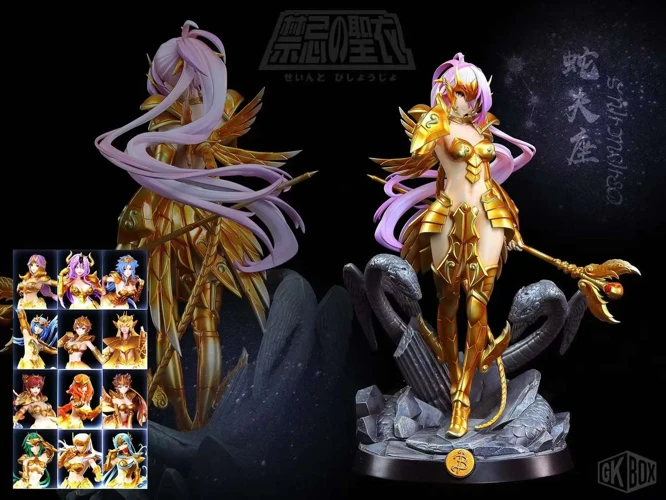
In conclusion, the mythological tale behind the Pegasus Constellation is a testament to the enduring power of storytelling and its ability to captivate our imaginations. From its divine lineage and Medusa’s curse to the heroic quests of Bellerophon and the enchanting connection with the Muses, the story of Pegasus is one of triumph, tragedy, and the everlasting quest for greatness. As we gaze up at the night sky and spot the graceful figure of Pegasus, we are reminded of the rich tapestry of ancient mythology that continues to inspire and enchant us. So, the next time you find yourself looking up at the stars, take a moment to reflect on the mythical tale of Pegasus and the incredible journey it represents. To explore more fascinating celestial wonders, you may also be interested in discovering the hidden talents of Ophiuchus individuals, or delving into the epic tale of Gilgamesh, one of the oldest surviving Mesopotamian myths in history.
Frequently Asked Questions

1. What is the significance of Pegasus in Greek mythology?
Pegasus holds great significance in Greek mythology as a symbol of divine inspiration, poetic creation, and the power of the imagination. It represents the bridging of the mortal and divine realms.
2. Was Pegasus the only winged horse in mythology?
No, Pegasus was not the only winged horse in mythology. There were other winged horses mentioned in various mythologies, such as the Hippocamps, which were sea creatures with the upper bodies of horses and the lower bodies of fish.
3. Were there any other creatures born from Medusa’s severed head?
Yes, besides Pegasus, two other creatures were born from the blood of Medusa’s severed head: the giant Chrysaor and the ferocious warrior-sprung from the neck was Pegasus’s brother, Chrysaor.
4. Did Pegasus have any special abilities?
Indeed, Pegasus possessed remarkable abilities. Being a winged horse, he had the power of flight, soaring through the skies with grace and speed. It was believed that drinking from the fountain created by Pegasus’ hooves could bring forth inspiration and creativity in artists and poets.
5. Was Pegasus involved in any heroic quests besides aiding Bellerophon?
While Pegasus is most famously known for his role in assisting Bellerophon, there are also tales of Pegasus aiding other heroes, such as Perseus during his battle with Medusa and Hercules during his quest for the Golden Apples of the Hesperides.
6. Is there any connection between Pegasus and the muses?
Yes, there is a strong connection between Pegasus and the muses in Greek mythology. It is said that Pegasus created the sacred fountain of Hippocrene by striking his hoof against the ground, which became a source of inspiration for the muses, the goddesses of the arts and sciences.
7. How did Pegasus become a constellation?
According to Greek mythology, after his heroic adventures with Bellerophon, Zeus transformed Pegasus into a constellation, immortalizing his image in the night sky as a testament to his courage and loyalty.
8. Can the Pegasus constellation be seen with the naked eye?
Yes, the Pegasus constellation is visible to the naked eye in the northern hemisphere. It is located near the celestial equator and can be observed during the autumn months.
9. Are there any other connections between Pegasus and astronomy?
Absolutely! Pegasus is not only associated with the Pegasus constellation but also with the globular cluster NGC 7492, which is informally known as the Pegasus Globular Cluster.
10. Is there any modern-day symbolism associated with Pegasus?
Yes, Pegasus continues to be a symbol of inspiration, imagination, and transcendence. In contemporary culture, Pegasus is often used to represent strength, grace, and the pursuit of dreams.
References
Frequently Asked Questions

What is the meaning behind the Pegasus constellation?
The Pegasus constellation holds great significance in Greek mythology as it represents the mythical winged horse, Pegasus. It is a beautiful celestial symbol of inspiration, freedom, and the power of imagination.
Who were Pegasus’ parents in Greek mythology?
Pegasus was born from the blood of the Gorgon Medusa after she was slain by the hero Perseus. His father was the sea god Poseidon, making him a divine creature with a unique lineage.
What happened to Medusa after she was killed?
After Medusa was killed by Perseus, her head retained its power, capable of turning people to stone. Perseus later gave the head to the goddess Athena, who placed it on her shield, the Aegis, for protection.
Who was Bellerophon and how did he tame Pegasus?
Bellerophon was a courageous hero in Greek mythology. To tame Pegasus, he sought the guidance of the goddess Athena, who gave him a golden bridle. With this magical bridle, Bellerophon managed to gain control over the wild and untamed Pegasus.
What was Bellerophon’s quest with Pegasus?
Bellerophon’s quest with Pegasus was to defeat the fearsome Chimera, a fire-breathing monster with the body of a lion, the head of a goat, and a serpent’s tail. With Pegasus’ aid, Bellerophon was able to soar through the skies and vanquish the dreadful creature.
How did Bellerophon’s pride lead to his downfall?
After accomplishing great feats with Pegasus, defeating the Chimera, and even attempting to reach Mount Olympus, Bellerophon became prideful and believed he was equal to the gods. This hubris angered Zeus, who sent a gadfly to sting Pegasus, causing Bellerophon to fall back to Earth.
What was the connection between Pegasus and the Muses?
In Greek mythology, the Muses were the nine goddesses of inspiration and the creative arts. Pegasus played a significant role in their story when the winged horse helped the musician and poet Hesiod find the fountain of the Muses, leading to his inspiration and success.
What was the request made by the Muses to Pegasus?
The Muses asked Pegasus to create a sacred spring on Mount Helicon by striking his hoof against the ground. Pegasus complied, and the spring, known as Hippocrene, emerged as a divine source of inspiration for all poets and artists.
How does the Pegasus constellation appear in the night sky?
The Pegasus constellation is easily recognizable in the night sky as a large square with an elongated tail. The four stars that make up the square shape represent Pegasus’ wings, while the tail is formed by a line of three stars.
What is the significance of the Pegasus constellation today?
Today, the Pegasus constellation serves as a reminder of the enduring legacy of ancient Greek mythology and the power of imagination. It continues to inspire stargazers and storytellers, adding a touch of wonder and enchantment to our modern understanding of the cosmos.







